Epic Bastar Dussehra: 75 Days of Unmatched Celebration
About Bastar Dussehra
Bastar Dussehra held in the Bastar area of Chhattisgarh of the Indian Nation, is known to be the world’s longest festival season. Most probably you heard somewhere about the cultural prosperity and enthusiasm of ” Bastar Dussehra” and landed here to gain information about it. Also, you must have guessed the answers to the beginning questions, hopefully.
Here, in this blog, we have mentioned all the information about rituals and ceremonies which are part of the festival which triples its joy. Read the blog to know more.
The uniqueness of Bastar Dussehra: Dussehra is a festival that honors the accomplishment of integrity over evil and is extensively recognized across the country. Dussehra, on the other hand, is celebrated for 75 days in one section of India, but to our amazement, it has no associations with Ramayana and its incidents. This one-of-a-kind ‘Dussehra of Bastar’ is celebrated for seventy-five days in Bastar, a tribal-dominated region of Chhattisgarh.
Why is Dussehra of Bastar celebrated?
According to the traditional tales, it is believed that Goddess Sati, the wife of Lord Shiva dropped her Daanth or tooth at a spot near the Bastar, and the area transformed in popularly known as “Danteshwari Temple”.
Bashar Dussehra is celebrated to honor Goddess Danteshwari and her sister Goddess Mavli. The rituals and ceremonies of the event are all performed and arranged by the tribal communities of the region. The event attracts a lot of tourists.
Important Rituals
Pat Jatra
The Pat Jatra celebration starts up with the Patjatra ritual on the wood (Thurlu Khotla) taken from the Machakot forest on Hareli Amavasya. A wooden ball is taken from the Bilori jungle for a purpose, about traditions. After the wood worship, seven Mangur fishes are sacrificed and Lai-gram is offered in it. This year, the tools used in making chariots are made from wood, etc. After the Patjatra ceremony, a huge chariot construction process is started with the completion of the derigadai ritual by installing a branch of the Sarai tree in the village Sirasar Bhawan of Biringpal village.
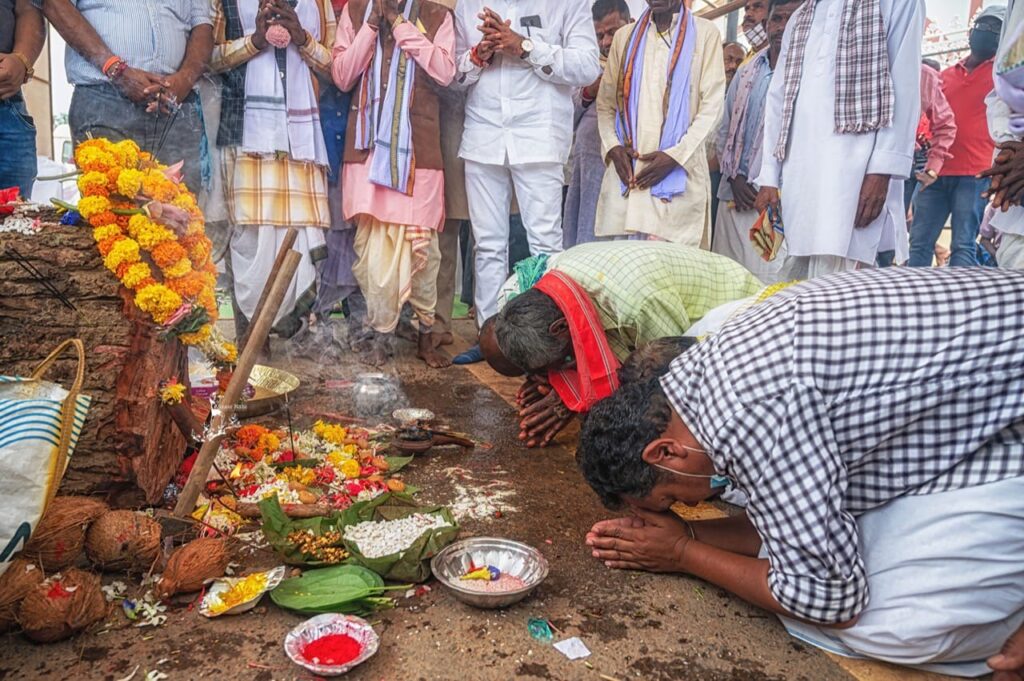
Photo By : utsav.gov.in
Kachin Gadi
The first step of Bastar Dussehra is Kachingadi (Gaddle to Kachin Devi) worship. A thorny swing is known as a kachingadi. On the day of Pitrumoksha Amavasya, Kachanagadi is worshipped.
In the Bastar region, Kacchin Devi is known as the goddess of battle. Dussehra of Bastar’s commencement appears to be so passionate, motivating, sentimental, touching, and repulsive that the mind becomes lost in it. The meaning of ‘Kacchin Gadi’ is to give the goddess of Kacchin a ” gaddi “, which is a thorn-covered seat.
The festivities begin at the Kacchin Gadi shrine, where a young girl from the Mirgin (weaver) community is placed on a thorny swing. It is thought that the spirit of Danteshwari, which enters her, protects her from harm. The Bastar Raja then approaches her, humbly asking if the festivities may commence.
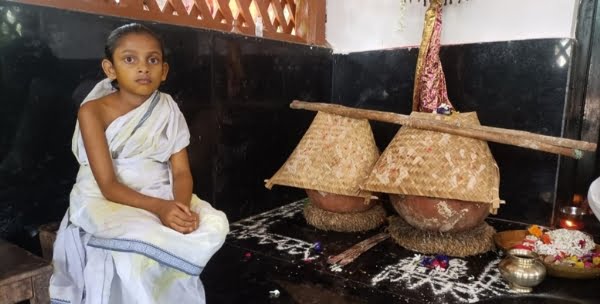
Photo By: grandnews.in
Jogi Bithai
The Jogi Bithai ceremony is done in the local Sirhasar on Ashwin Shukla Paksha. A member of the Halba community sits in the yogic posture for nine consecutive days in a pit, while Jogi consumes fruits and milk only on those days.
Since the royal period, the Jogis of the Halba tribe has carried up this custom.
A Jogi family member who has fasted for nine days arrives in Sirhasar on the first day of Pitrumoksha Amavasya, before sitting in the assigned pit. On the day of Amavasya, he and his family pay respect to their ancestors at a predetermined location. Only after he shows admiration towards the ancestors, he is considered ready to sit as a Jogi in a yogic posture for this ritual. Before beginning the fast, the Jogi pays tribute to his ancestors by conducting Shradh, and then sits on a fast for nine days, expressing faith in his ancestors and wishing for the celebration to go smoothly from the second day.
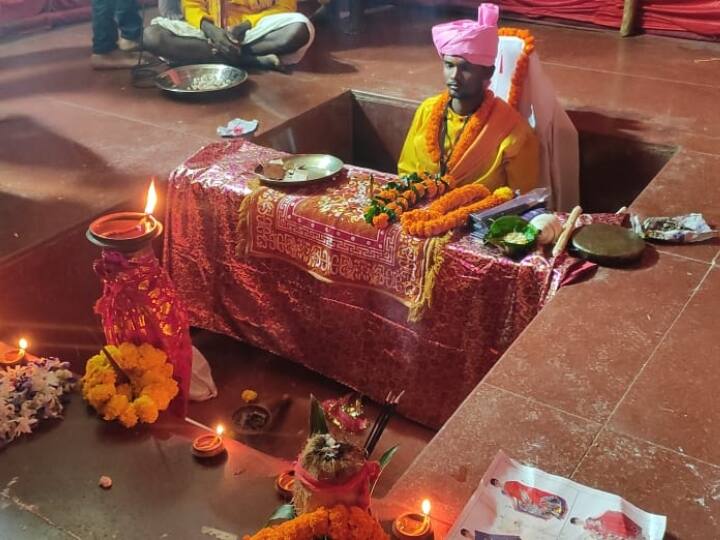
Photo By: abplive.in
Maoli Parghav
While the people applaud and rejoice in Devi’s arrival at Jagdalpur, the “Maoli Parghav” takes place. People from all over the world attend the subsequent events. This evening, there will be two special occasions. One is that of the Dantewada Danteshwari temple priests, who travel in a palanquin, and the other is that of the King, who travels on foot with his ministers. He then transports the Goddess to the Jagdalpur Danteshwari shrine in a humble manner.
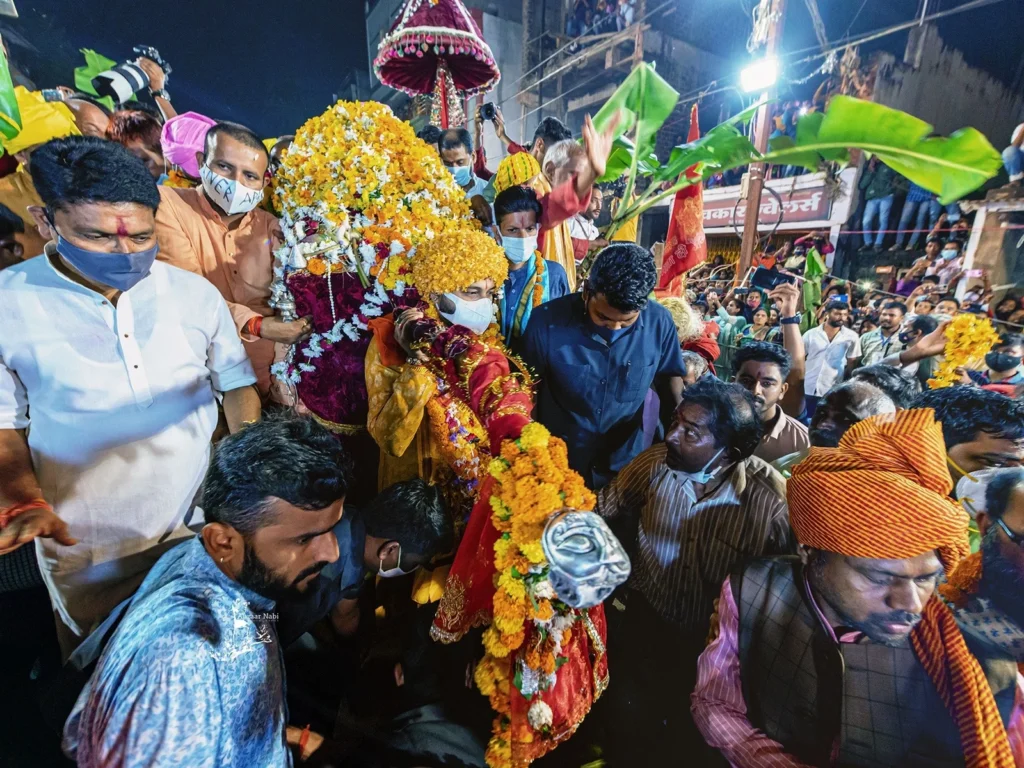
Photo By: Anzaar Nabi/culturedevi.in
Bheetar Raini
Vijay Rath, an eight-wheeled wooden chariot, concluded its trip across the city on Vijayadashmi. It is stolen and stored in Kumhdakot as a ceremonial.
Pushp Rath Parikrama
Around Ashwin Shukla Paksha Dwitiya To Saptami Tithi, the rath yatra begins. From ancient times, the parades marched across the town on a usual basis.
Nisha Jatra
In the Nisha Jatra ritual, dozens of goats are sacrificed at midnight. In this, priests, devotees along royal family members are present. In this ritual, 16 Kanwar’s are offered to the gods and goddesses.
Rath Yatra
The Rath Yatra, in which a massive chariot is pushed by 400 Marias, is one of the most popular Bastar Dussehra celebrations. The chariot appears to be rudimentary, but it is a symbol of the tribe King’s sponsorship of local craft and expresses tribal values about not using advanced tools to make elaborate chariots. Every year, a new chariot is created.
The two-story chariot is the major appeal for Tourists.
The massive two-story wooden chariot, which is eagerly dragged by dozens of locals, is the key event of Bastar Dussehra. The villagers on the chariot’s faith and devotion are symbolized by Maa Danteshwari’s umbrella. The king used to ride as long as the monarchy was alive.
The crafting of a massive chariot in such a short space of time despite the use of modern technology and equipment is a unique testament to the tribals’ wood art, as well as a noble effort that awakens the buried spirit of cooperation in them. Honoring and honoring all deities equally, regardless of caste or class, is a symbol of solidarity and firmness.
Some facts about Bastar Dussehra
- Bastar Dussehra is the world’s longest event (75 Days).
- Goddess Danteshwari and her sister Goddess Mavli are honored throughout this event.
- Jagdalpur, in the Bastar region, hosts the primary event.
- On Hareli Amavasya, the celebration begins and ends on Ashwin Shukla Trayodashi.
So, this was all about the world’s longest festival and its cultural heritage. The liveliness and spirit of every ritual performed in the festival are breathtaking. It not only enriches India with its vibrancy but also keeps our ancestral gifts existing and standing in today’s modern society.
https://utsav.gov.in/view-event/bastar-dussehra-jagdalpur-chhattisgarh-1
Read more about Bastar
Comment Section
Epic Bastar Dussehra: 75 Days of Unmatched Celebration
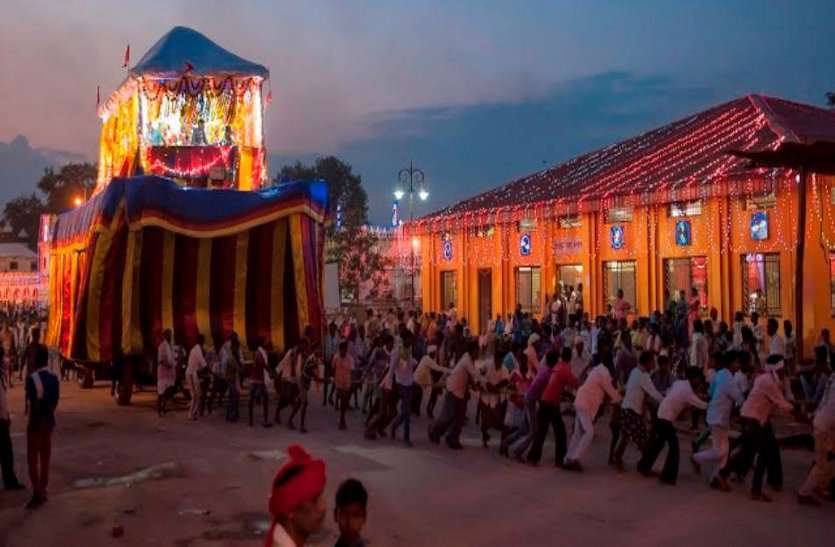
Queries Regarding Bookings
Author Profile
Komal Jha
We will love to update the latest updates.



